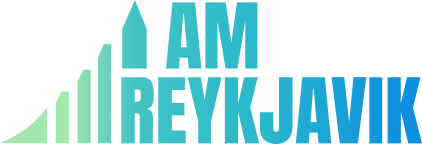

Is The System of Education in Iceland Among the Best?
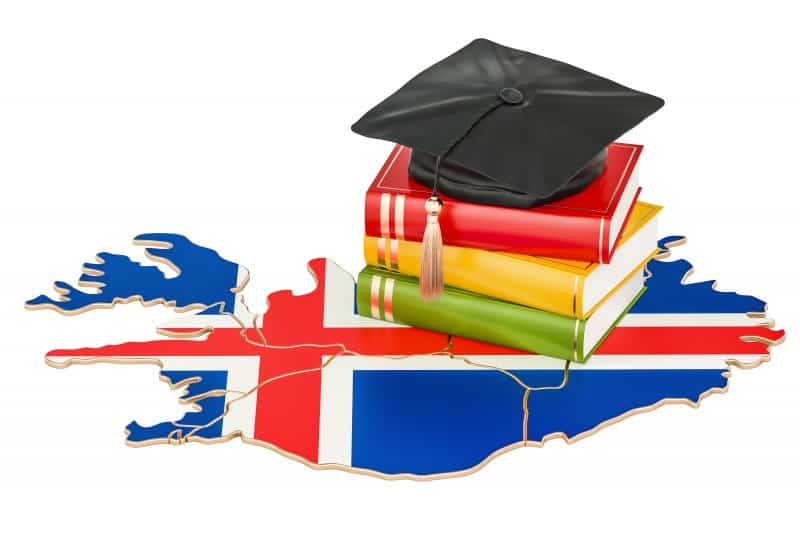
E ducation nowadays is –or should be- one of the main concerns of modern governments. Education will surely build up their future society’s skills and influence moral standards. The System of Education in Iceland resembles most of the Scandinavian countries. It ranks quite high in the global index but falls behind its Nordic neighbors.

To understand the system of education in Iceland, we should start by explaining its history. Since 1907 it is mandatory for children from 10 to 14 years old to attend school. Although education was already a general fact among the country back in the 18th century. Children under 10 years old were taught at home. Then in 1946, the period of mandatory school attendance was extended from 6 to 15 years old.

Nordic educational systems are one of the best among European countries and other nations around the world. One of its main characteristics is that education is free. The great majority of schools, high schools and universities are founded by the State. Even the private ones receive funds from the government.
One of the members from the Ministry of Education, Science and Culture stated about the system of education in Iceland: “A fundamental principle of the Icelandic educational system is that everyone should have equal opportunities to acquire an education, irrespective of sex, economic status, residential location, religion, possible handicap, and cultural or social background”
Technology has a special role in the whole education system as well, but mostly during the first years. The government also considers fundamental to promote the creativity.
The educational system is divided in 4 stages. We will talk about each of them now.
Preschool or leikskóli is for children until they are 6 years old. This is a non-compulsory education period. The current legislation for this period dates from 2007. Actually, it is the local government who implements the regulation and guidelines. Parents should pay about 30% of the cost of running these institutions through a fee.

Compulsory or grunnskóli comprises primary and lower secondary. As the name implies, it is mandatory for every child and adolescent between 6 and 16 years old. The school year lasts 9 months, as in many developed countries. It ranges from late August- early September to late May – early June.
The system of education in Iceland states that it is the right of the children to attend school. It also should be in the same area where they live at. At the same time it is their parent’s responsibility to register them and make sure they attend school every day.
Every educational institution is mixed, and children tend to be separated by age. However, because of the geography of the country, there are some isolated areas where child from different ages study together. There can be around 10 pupils in the school!. As a fact, 50% of the Icelandic schools have less than 100 students.
Upper secondary
Framhaldsskóli or “continued school” comes after low secondary school and it is optional. These high schools are known as “gymnasia”. Even if it is non-compulsory education, all the students that have finished low secondary have the right to attend this level. This stage is still free, students are only required to pay an enrolment fee and buy their own textbooks.
There are different gymnasia schools divided in:
- Grammar schools
- Industrial-vocational schools
- Comprehensive schools
- Specialised vocational schools

The System of Education in Iceland Among the Best?
Higher education.
There are eight institutions for háskóli in the country. The University of Iceland firstly opened in 1911. It is still the main institution for higher education in the country. Although new universities have opened since then. The current law about higher education is the oldest, it dates from 1997. In institutions run by the state, there are only admission fees but not tuition fees.
In the system of education in Iceland, the government offers financial support to some students. They should start paying back this money in two years after finishing their degree. Foreign students can also apply for these loans and there are also studentships for foreigners to study Icelandic language and literature.
In Iceland is common that university students already live emancipated and combine the university with part time jobs .

Leave a Comment Cancel reply
Your email address will not be published. Required fields are marked *
- Society ›
- Education & Science
Education in Iceland - Statistics & Facts
A high share of public schools, higher education: no tuition fees and studying abroad, key insights.
Detailed statistics
Educational attainment in Iceland 2021
Total number of primary schools in Iceland 2000-2022
Number of university students in Iceland 2011-2022, by gender
Editor’s Picks Current statistics on this topic
Education Level & Skills
Population in Iceland 2022, by level of education
Educational attainment in Iceland 2022, by gender
Further recommended statistics
- Basic Statistic Educational attainment in Iceland 2021
- Basic Statistic Educational attainment in Iceland 2022, by gender
- Premium Statistic Educational attainment in Iceland 2021, by age
- Basic Statistic Population in Iceland 2022, by level of education
- Premium Statistic Share of GDP spent on education in Europe 2020
- Basic Statistic Government expenditure on education in Iceland 2000-2020
Educational attainment in Iceland in 2021
Educational attainment in Iceland in 2022, by gender
Educational attainment in Iceland 2021, by age
Educational attainment in Iceland in 2021, by age
Share of the population in Iceland in 2022, by level of education
Share of GDP spent on education in Europe 2020
Education spending as a share of gross domestic product (GDP) in Europe in 2020
Government expenditure on education in Iceland 2000-2020
Government expenditure on education in Iceland from 2000 to 2020 (percentage of GDP)
Pre-primary education
- Premium Statistic Number of children in pre-primary schools in Iceland, 2000-2021
- Premium Statistic Number of foreign children in pre-primary schools in Iceland, 2021, by citizenship
- Premium Statistic Number of foreign children in pre-primary schools in Iceland, 2001-2021
- Premium Statistic Number of personnel in pre-primary schools in Iceland, 2000-2021
- Premium Statistic Number of personnel in pre-primary schools in Iceland, 2021, by gender
Number of children in pre-primary schools in Iceland, 2000-2021
Number of children in pre-primary schools in Iceland from 2000 to 2021
Number of foreign children in pre-primary schools in Iceland, 2021, by citizenship
Number of children in pre-primary schools in Iceland in 2021, by citizenship
Number of foreign children in pre-primary schools in Iceland, 2001-2021
Number of foreign children in pre-primary schools in Iceland from 2001 to 2021
Number of personnel in pre-primary schools in Iceland, 2000-2021
Number of personnel in pre-primary schools in Iceland from 2000 to 2021
Number of personnel in pre-primary schools in Iceland, 2021, by gender
Number of personnel in pre-primary schools in Iceland in 2021, by gender
Primary education
- Premium Statistic Total number of primary schools in Iceland 2000-2022
- Premium Statistic Number of primary schools in Iceland 2022, by type
- Premium Statistic Number of pupils in primary schools in Iceland 2000-2022
- Premium Statistic Pupils in primary schools in Iceland with another mother tongue 2022, by language
- Premium Statistic Number of teachers in primary schools in Iceland 2000-2022
- Premium Statistic Share of teachers in primary schools in Iceland 2000-2022, by gender
- Premium Statistic Pupils per teacher in primary schools in Iceland 2000-2022
- Premium Statistic Annual earnings of primary school teachers in Iceland 2014-2022
Total number of primary schools in Iceland from 2000 to 2022
Number of primary schools in Iceland 2022, by type
Number of primary schools in Iceland from in 2022, by type
Number of pupils in primary schools in Iceland 2000-2022
Number of pupils in primary schools in Iceland from 2000 to 2022
Pupils in primary schools in Iceland with another mother tongue 2022, by language
Number of pupils in primary schools in Iceland with another mother tongue in 2022, by language
Number of teachers in primary schools in Iceland 2000-2022
Number of teachers in primary schools in Iceland from 2000 to 2022
Share of teachers in primary schools in Iceland 2000-2022, by gender
Share of teachers in primary schools in Iceland from 2000 to 2022, by gender
Pupils per teacher in primary schools in Iceland 2000-2022
Ratio of pupils per teacher in primary schools in Iceland from 2000 to 2022
Annual earnings of primary school teachers in Iceland 2014-2022
Regular average annual earnings of primary school teachers in Iceland compared with the national average from 2014 to 2022 (In 1,000 ISK)
Upper secondary education
- Premium Statistic Number of students in upper secondary schools in Iceland 2000-2021
- Premium Statistic Number of students in upper secondary schools in Iceland 2000-2022, by gender
- Premium Statistic Number of students in upper secondary schools in Iceland 2022, by subject
- Premium Statistic Number of graduated students in upper secondary schools in Iceland 2000-2021
- Premium Statistic Number of graduates from upper secondary schools in Iceland 2000-2021, by gender
- Premium Statistic Regular average yearly earnings of secondary education teachers in Iceland 2014-2022
- Premium Statistic High school students' attitudes to reading in Iceland 2018, by gender
- Premium Statistic Reading performance in Iceland 2018, by socio-economic background
Number of students in upper secondary schools in Iceland 2000-2021
Number of students in upper secondary schools in Iceland from 2000 to 2021
Number of students in upper secondary schools in Iceland 2000-2022, by gender
Number of students in upper secondary schools in Iceland from 2000 to 2022, by gender
Number of students in upper secondary schools in Iceland 2022, by subject
Number of students in upper secondary schools in Iceland in 2022, by subject
Number of graduated students in upper secondary schools in Iceland 2000-2021
Number of graduated students in upper secondary schools in Iceland from 2000 to 2021
Number of graduates from upper secondary schools in Iceland 2000-2021, by gender
Number of graduates from upper secondary schools in Iceland from 2000 to 2021, by gender
Regular average yearly earnings of secondary education teachers in Iceland 2014-2022
Regular average annual earnings of secondary educational teachers in Iceland compared with the national average from 2014 to 2022 (In 1,000 ISK)
High school students' attitudes to reading in Iceland 2018, by gender
High school students' attitudes towards reading in Iceland in 2018, by gender
Reading performance in Iceland 2018, by socio-economic background
Reading performance among upper-secondary school students in Iceland in 2018, by socio-economic background
Higher education
- Basic Statistic Number of university students in Iceland 2010-2022
- Premium Statistic Number of university students in Iceland 2011-2022, by gender
- Premium Statistic Number of university students in Iceland 2022, by subject and gender
- Premium Statistic Number of Icelanders studying abroad 2022, by country
- Premium Statistic Number of Icelanders studying abroad 2022, by subject
- Premium Statistic Number of tertiary level graduates from universities in Iceland 2000-2021, by gender
- Premium Statistic Tertiary level graduations from universities in Iceland 2021, by subject
- Premium Statistic Earnings of higher education teachers in Iceland 2014-2021
Number of university students in Iceland 2010-2022
Number of university students in Iceland from 2010 to 2022
Number of university students in Iceland from 2011 to 2022, by gender
Number of university students in Iceland 2022, by subject and gender
Number of university students in Iceland in 2022, by subject and gender
Number of Icelanders studying abroad 2022, by country
Number of Icelanders studying abroad in 2022, by country
Number of Icelanders studying abroad 2022, by subject
Number of Icelanders studying abroad in 2022, by subject
Number of tertiary level graduates from universities in Iceland 2000-2021, by gender
Number of tertiary level graduates from universities in Iceland from 2000 to 2021, by gender
Tertiary level graduations from universities in Iceland 2021, by subject
Tertiary level graduations from universities in Iceland from in 2021, by subject
Earnings of higher education teachers in Iceland 2014-2021
Regular average annual earnings of higher education teachers in Iceland compared with the national average from 2014 to 2021 (In 1,000 ISK)
- Basic Statistic Frequency of bullying in European countries 2018
- Premium Statistic High school students' life satisfaction in Iceland 2018
- Premium Statistic High school students' negative feelings in Iceland 2018
- Premium Statistic High school students' positive feelings in Iceland 2018
Frequency of bullying in European countries 2018
Share of students who reported being victims of any type of bullying act at least a few times a month in selected European countries in 2018
High school students' life satisfaction in Iceland 2018
High school students' life satisfaction in Iceland in 2018 (score from 0 to 10)
High school students' negative feelings in Iceland 2018
High school students' negative feelings in Iceland in 2018
High school students' positive feelings in Iceland 2018
High school students' positive feelings in Iceland in 2018
Further reports
Get the best reports to understand your industry.
- Education in Europe
- Education in Denmark
- Education in Sweden
- Education in Norway
Mon - Fri, 9am - 6pm (EST)
Mon - Fri, 9am - 5pm (SGT)
Mon - Fri, 10:00am - 6:00pm (JST)
Mon - Fri, 9:30am - 5pm (GMT)
A Comprehensive Guide to the Icelandic School System
Published by Movingtoiceland.com Editor on September 7, 2023 September 7, 2023

Introduction
Iceland, a nation renowned for its progressive society, offers a robust and inclusive education system that stands as a beacon of innovation and quality. If you’re contemplating relocating to this Nordic gem, this guide will furnish you with all the vital details about the educational landscape in Iceland, helping you make an informed decision for your family’s future.
Structure of the Icelandic School System
Understanding the structure of the Icelandic school system is the first step in planning your move. Here, we dissect the different stages of education in Iceland, giving you a clear picture of what to anticipate.
Pre-school to Higher Education
In Iceland, the educational journey begins at an early age with pre-school (Leikskóli) usually admitting children at 18 months, though in some cases, enrollment can be as early as 1 year. These institutions focus on the holistic development of children, fostering creativity and curiosity from an early age. This phase transitions into the compulsory school (Grunnskóli) for students aged 6 to 16, offering a well-rounded curriculum that includes a wide array of subjects.
As students advance, they enter the upper secondary school, known as Menntaskóli or Framhaldsskóli, a stage offering diverse programs catering to individuals aged 16 to 20. For those aspiring to pursue higher education, Iceland houses several reputable universities (Háskóli) , offering a range of undergraduate and postgraduate programs.
International Schools and Support Programs
Relocating to a new country brings its set of challenges, especially concerning education. Fortunately, Iceland offers a selection of international schools and programs to facilitate this transition. For instance, the International School of Iceland in Reykjavik offers the International Baccalaureate (IB) program, providing a multicultural environment and fostering global citizenship among students. Additionally, several Icelandic universities offer programs in English to cater to the international student population, facilitating a smoother integration into the Icelandic education system.
Bilingual Education in Iceland
In Iceland, bilingual education is a significant focus, especially in schools with a considerable number of international students. This approach involves teaching students in both Icelandic and another language, often English, to ensure they can comfortably communicate and learn in both languages. This focus ensures that all students have the opportunity to excel in their studies, regardless of their linguistic background.
Living and Studying in Iceland
Moving to Iceland is an exhilarating adventure, accompanied by its set of challenges. This section serves as a guide for newcomers, focusing on cultural adaptation and the legal prerequisites for school admission.
Cultural Adaptation and Community Engagement
Adapting to the Icelandic culture is a vital part of the relocation process. Embrace the local customs and traditions to enhance your experience and integrate seamlessly into the community. Building a network and becoming part of the community can assist in settling down in a new country, with many schools offering community programs and networking opportunities.
Legal Requirements and School Admission
Before enrolling in an Icelandic school, familiarize yourself with the legal requirements, including the necessary documentation and visas or permits for residing in Iceland. Consulting with respective institutions or legal advisors can ensure a smooth transition. For more information, you can visit the Directorate of Immigration website.
Student Life and Support Services
Student life in Iceland is vibrant and fulfilling, offering a range of extracurricular activities including sports, which foster friendships and enhance overall well-being. To cater to the diverse needs of international students, many schools in Iceland offer support services, including counseling, language assistance, and mentorship programs, ensuring every student has the resources needed to succeed.
Teacher Training and Continuous Professional Development
Iceland places a strong emphasis on teacher training and continuous professional development. This commitment is reflected in the comprehensive programs designed to equip educators with the skills and knowledge needed to excel in their roles. These programs focus on innovative teaching methods and student-centric approaches, fostering a nurturing and inclusive learning environment. Moreover, continuous professional development is encouraged, with numerous opportunities for teachers to further their skills and knowledge through workshops and conferences.
Challenges and Opportunities in the Icelandic School System
While robust, the Icelandic education system faces challenges, including addressing the diverse needs of a growing international student population and integrating technology effectively into the classroom. Despite these challenges, the proactive approach of the government and educational institutions presents numerous opportunities for the development and growth of the education sector in Iceland.
In conclusion, the Icelandic school system promises a rich and diverse educational experience. With its innovative teaching methods, supportive environment for international students, and a strong focus on holistic development, Iceland stands as a promising destination for those looking to relocate.
Movingtoiceland.com Editor
Contact by email [email protected]
Related Posts

Guide to Become an Au pair in Iceland
Imagine living in Iceland, where you can find volcanoes and ice, where old traditions meet modern life. If you want to explore this amazing country, becoming an au pair could be your perfect chance. This Read more…

Top 9 Great Entry-Level Jobs in Iceland
Moving to Iceland is a dream for many. The first step towards settling in the country often involves finding a job. Fortunately, Iceland offers various entry-level positions suitable for newcomers, including those who don’t speak Read more…

Icelandic Food: The Delicious Guide to Traditional and Modern Icelandic Cuisine
Introduction to Icelandic cuisine Hey there, food enthusiasts! Ever wondered what makes Icelandic cuisine so unique? Well, you’re in for a treat. Iceland’s culinary scene is a fascinating mix of history, geography, and pure innovation. Read more…
From Iceland — THE ICELANDIC EDUCATION SYSTEM: A PRIMER
The icelandic education system: a primer.
Published September 5, 2011

The Icelandic education system resembles those of Denmark and other Scandinavian countries. There are four levels of education: day-care for children aged 2–6 years old (sometimes younger), compulsory education for children aged 6–16, followed by ‘secondary school’ (akin to high school), which is usually four years, followed by higher education provided by Iceland’s universities. Iceland does not have a tradition of private schools, although there are privately owned and operated institutions at all levels of education. Generally these do not carry any higher prestige than the public institutions, and compared to other developed countries Iceland has a very low level of students attending private schools. All levels of education are subsidised by the state, including day-care. The day-care and the compulsory schools are managed or overseen by local authorities, while the menntaskóli and universities are managed or overseen by the state. There is not much parent involvement in the schools’ work and parents are generally not offered many opportunities to volunteer or otherwise participate directly in the daily operation of day-care centres or primary schools. Of course the level of parent involvement varies very much from school to school, and from class to class, and it is very much up to the parents themselves to participate and get engaged. There is usually a shortage of parents on parent boards, so anyone willing to invest time and energy will usually be greeted with open arms. Parents who are used to American style involvement in their children’s education will be disappointed and frustrated at the general level of disengagement of other parents. Most children engage in some extracurricular activities, especially sports. The local sports team usually offers handball and soccer classes that are popular with both boys and girls. Some also offer swimming and gymnastics and other sports or martial arts and even chess! Enrolling in sports or such activities can be an important step towards finding friends and gaining acceptance in the world of Icelandic children—a world that can often be very competitive. The scouts are also a popular choice. While arts and music education are subsidised by the local authorities, they are generally rather expensive to attend. The local youth centres might offer clubs or some classes, and schools similarly offer some after school clubs. Finding extracurricular activities for your children can be challenging and parents are encouraged to engage in research, ask other parents what their children are doing, as well as contacting your local school, sports team and the municipal authorities for information. THE FOUR LEVELS OF EDUCATION Day-care In Iceland, all children aged 2–6 have the right to day-care. Day-care institutions are operated by the municipalities. In 2010, there were 277 pre-primary institutions in Iceland, with an average of 68 children per institution. Day-care is subsidised by the state, although parents pay day-care fees. Children eat breakfast and a proper lunch at school. Privately operated day-care centres have grown rapidly in number in recent years. At year-end of 2009 there were 39 privately run day-care institutions in Iceland. Most of these are organised around a specific educational philosophy, including ‘Waldorf education,’ which is based on the principles of Austrian philosopher Rudolf Steiner. There is also homegrown educational philosophy ‘Hjallastefnan,’ which also emphasises fostering children’s imagination and connection to nature. Hjallastefnan operates ten day-care centres and three compulsory schools that serve children 5-8 or 9 years old. Day-care centres are legally obliged to accommodate all children, including disabled children and children with special needs, including special support (although the reality does not always meet these ideals). Despite day-care staff having long been underpaid and certain austerity measures that have hurt the system, the day-care system has held up very well, and is extremely ambitious and admirable. Icelandic day-care centres are very multicultural, as both students and staff represent the rapidly changing face of Icelandic society. Compulsory education—Grunnskóli In Iceland, school attendance is compulsory for all children aged 6-16. Home schooling is not allowed, and parents are legally obliged to send their children to an accredited school. In 2010, there were 172 compulsory schools in Iceland. Out of these, ten were private schools. Less than 2% of students attend private schools, fewer than in most OECD countries. At public schools education is offered free of charge, while most private schools charge student fees. Compulsory education is largely standardised, and when children finish the “standardised tests” at age sixteen most have gone through the same educational experience. The education is focused on academic subjects, and although there is some opportunity to take elective subjects at older levels children who wish for an academic experience consisting of arts or music must take these subjects at arts or music schools, and these are far from cheap. There are very few schools that offer any kind of vocational classes for children younger than sixteen. There are no schools for gifted children, and schools that serve children with special needs, physical or learning disabilities are proportionately rare. The Icelandic educational system has tried to emphasise equality and mostly attempts to serve children with special needs within the regular school system. The average size of classes is 18-19 children, which is low in international comparison. Compulsory schools are also small on average, a third of schools having fewer than 100 students. The largest school, Árbæjarskóli, has fewer than 800 students. Secondary education—Menntaskóli Secondary education is not compulsory, but anyone who has completed compulsory education has the right to enter a course of studies in secondary school. All teenagers who have finished their compulsory education are guaranteed access to the “menntaskóli,” although they are not guaranteed admission to the school of their choice. Generally, secondary education is organised as a four-year process, leading to a matriculation examination that gives access to university level schools. The length of studies in vocational education varies, but four years is also the most common here. As a consequence most students in secondary schools are 16–20 years of age. There are three types of schools within the secondary school system: grammar schools, comprehensive schools and specialised schools. The nine grammar schools focus on classic academic subjects aimed at preparing students to enter University and are in many ways similar to the Gymnasium in Denmark, deriving their origins from medieval cathedral and monastery schools. While students can in fact still study Latin at some of those schools, their curriculum has been thoroughly modernised and students can choose a line of study which suits their academic interests, languages, social sciences, or natural sciences, but generally have very little choice in which classes they attend, as they cannot freely choose subjects as students at comprehensive schools can. The comprehensive schools offer academic studies as well as vocational training. There are currently 22 comprehensive schools being operated, and while only three of the grammar schools are located outside Reykjavík, most secondary schools outside the capital are comprehensive schools that offer vocational training. Students have a wide variety of subjects to choose from that are not offered at the grammar schools, from arts and theatre to plumbing and ship building. The specialised schools offer classes in subjects not offered in the comprehensive or grammar schools, such as music or arts, and most do not graduate students with a matriculation exam. Some of the specialised schools also offer classes at the university level, including the agricultural college at Hólar. Some of the grammar and comprehensive schools charge school fees or charge students for materials, although these are reasonable in most cases. Classes at the specialised schools are more expensive. The governmental student loan system, LÍN, provides subsidised loans to cover fees and materials to eligible students, but these loans are very modest in most cases and students therefore continue to live with their parents and rely on family support. For many students, the secondary school experience is less about academics and more about the active social life. Icelandic secondary schools do not compete in sports, but academic competitions are popular and there is considerable prestige attached to making the school debate team or the quiz team. Higher education Only those who have finished the matriculation exam at a grammar or comprehensive school, or a comparable education elsewhere, can be admitted to university (unless their circumstances are deemed ‘special’, say they have field experience). Most Icelandic students enter University at 20–24 years of age, and graduate in four to five years. In 2010 there were 12.699 students seeking a BA degree, 4.352 students seeking a MA degree and 482 students seeking PhDs at Icelandic Universities. In addition, there were 1.650 students seeking diplomas or candidatus degrees. The social sciences, business and law are the most popular subjects. There are currently seven full universities in Iceland. The University of Iceland, the oldest and largest university, founded in 1911, is the only university with a full range of BA and MA degrees in academic disciplines. Reykjavík University, a private university, founded in 1998 offers degrees in law, business, computer science, engineering as well as sports science. Together the Universities of Iceland and Reykjavík, both of which are located in Reykjavík—at opposite sides of the downtown bog to be precise—account for over 80% of all university students in Iceland. In addition to these two there are several smaller universities. The Icelandic Academy of the Arts has departments of Design and architecture, fine arts, music and theatre and offers various BA degrees as well as MA degrees in art education, composition and theatre. The University of Akureyri, situated in Akureyri, the largest town and the “capital” of Northern Iceland offers various BA and MA degrees in the humanities and social sciences, health sciences, business and natural resource sciences. A second small university located outside Reykjavik, Bifröst University, offers BA and MA degrees in social sciences, law and business. Bifröst University can trace its roots back to the Cooperative College, founded in 1918 by the Federation of Icelandic Cooperatives, and operated as a grammar school until 1988 when it was turned into a University. The school was originally a kind of cooperative counterweight to the Commerce College, Verzlunarskóli Íslands, founded in 1905 and operated by the Chamber of commerce since 1922. In 1988, the same year Bifröst was reorganised as a university, the Commerce College founded its own University of Computer Science, which became Reykjavík University in 1998. Finally, there are two small agricultural universities, The Agricultural University of Iceland at Hvanneyri, Western Iceland and Hólar University college in Northern Iceland, who both offer BA and MA degrees in agriculture, tourism and resource management.
Next: PARTY 101 Previous: You Need To Pay For School Now?
Go travel with Grapevine tried and recommended tours by Grapevine. Fund Grapevine journalism by booking with us.
Subscribe to our newsletter for FREE ! Weekly news + video content from Iceland and some Grapevine Store discounts and give-aways!

Asylum Seekers Evicted In Hafnarfjörður

Tacos Served With A Side Of Jazz

Increased Rates Of Homelessness Anticipated Due To Refugee Policy

Cover Features
Bound By All Things Kinky

Animal Of Iceland: The Midge

Being Black In Iceland: An Interview With Jewells Chambers

Grapevine New Music Picks: Una Torfa, Hipsumhaps, Soffía Björg & More

Icelandic Crossfit Champion Gets Naked

The Japanese Entrepreneur Making Iceland Sweeter
by Iryna Zubenko 12:11

Presidential Candidates: Arnar Þór Jónsson
by Jóhannes Bjarkason 11:13

Presidential Candidates: Ásdís Rán Gunnarsdóttir

Presidential Candidates: Ástþór Magnússon Wium

Presidential Candidates: Baldur Þórhallsson

Presidential Candidates: Halla Tómasdóttir
Privacy overview.

Studying in Iceland

- Why Study Abroad in Iceland?
- Where To Study in Iceland?
- Universities in Reykjavik
- Universities Outside of Reykjavik.
- Students Living in Iceland

How difficult is it for international students to study in Iceland? Are courses available in English, and how many higher education facilities are there in the country? Read on to find out all you need to know about studying in Iceland.
- Learn more about Icelandic life in International Relations of Iceland
- See employment opportunities in How To Find A Job in Iceland
- Know the emigration process: How to Move to Iceland | The Ultimate Guide
There is an old Icelandic proverb that sums up this country's attitude to education rather beautifully; " Better wise language than well-combed hair ". Without even trying, it manages to sum up perfectly the priority put on education here, even if it does come at the expense of not looking your best.
Top Culture Tours
5-day iceland blue lagoon & northern lights city break from keflavik international airport, 3-day reykjavik city break with optional activities starting from keflavik airport, 6-day reykjavik city break with optional activities starting at keflavik airport.
Well, for anyone who has attended a university knows, hours of late-night study, copious partying and the expansion of the mind comes at a price: bags under the eyes, frazzled locks, the thousand-yard stare... it's all a part of the university experience.
Header Photo: Pexels.com
In today’s competitive world, earning tertiary education has never been more important for those seeking higher-level positions. Employers, by enlarge, look for candidates not only with a university education but a successful university education, instilling competition in the classroom itself.
Many are looking for candidates who have proven to take their studies a step further, tossing aside applications that do not at least include education up to Masters or PhD level. This is not for every job, of course, but for those career-oriented people, the importance of a university education cannot be stressed enough.
Why Study Abroad in Iceland?
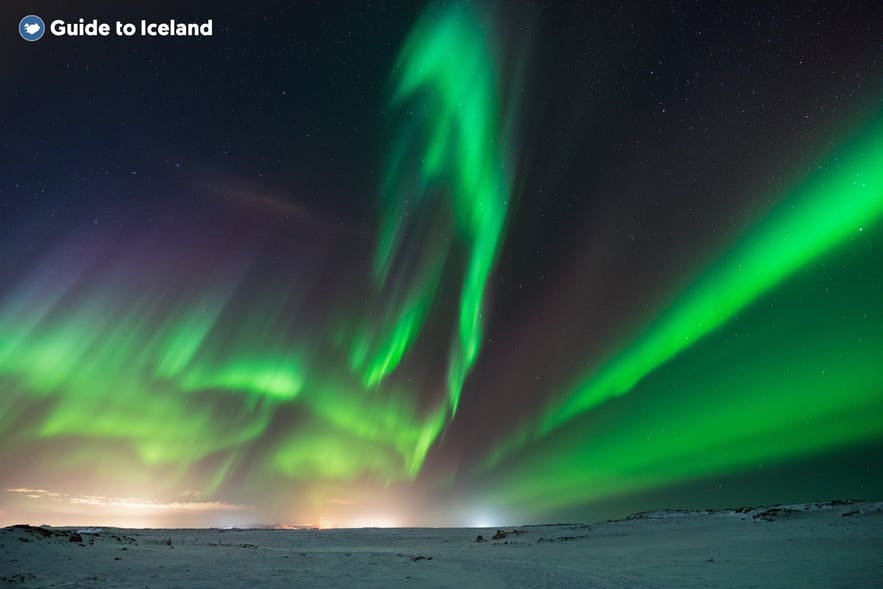
Iceland has a rich history of academia, beginning with the ancient saga writers, who recorded almost all that we know about Norse mythology and medieval Scandinavia. Upon the Christianisation of the country , ecclesiastical sites became dedicated learning institutions, taking on the bulk of translating foreign religious works into Icelandic.
This would be continued for decade upon decade, grounding the Icelandic people in a steep history of active learning.
- See Also: The History of Iceland.
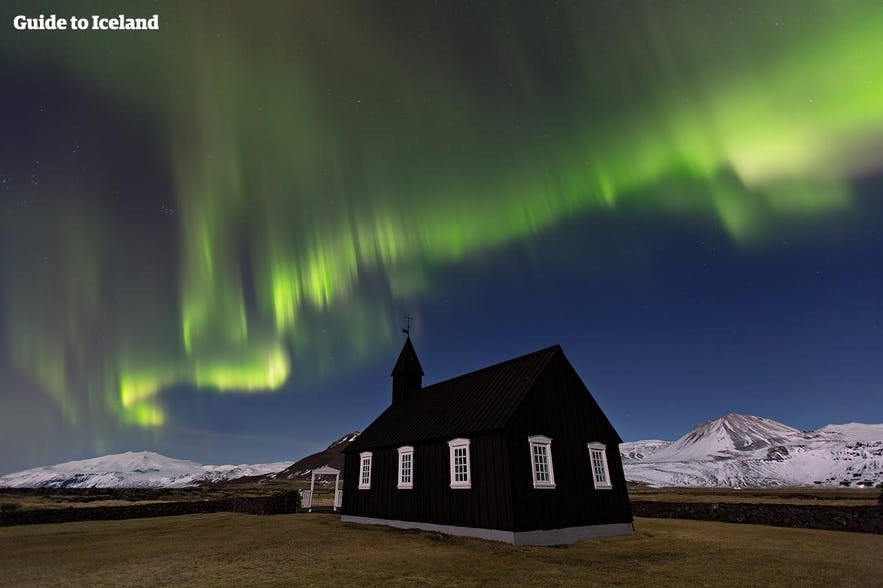
Throughout the proceeding centuries, Icelandic intellectuals continued this long tradition of pursuing knowledge. They even played a major part in the country's independence movement, a drive that went hand-in-hand with developing this island's first higher-education institutions.
Since 2010, following the violent eruption of Eyjafjallajökull stratovolcano , Iceland has been the go-to travel destination, with tourists visiting from across the planet. Many who visit feel an instant connection with this ancient land, and hurriedly begin organising repeat trips to the country. Other travellers begin to weigh up options on how they might come to spend more time here: Moving abroad? A work exchange program? Studying?
- See Also: Volcanoes in Iceland.
The reasons for wanting to make the commitment are obvious. Nature here is indescribably stunning and unique, the local population is friendly, educated and welcoming and the opportunities for self-development, growth and learning are, seemingly, never-ending.
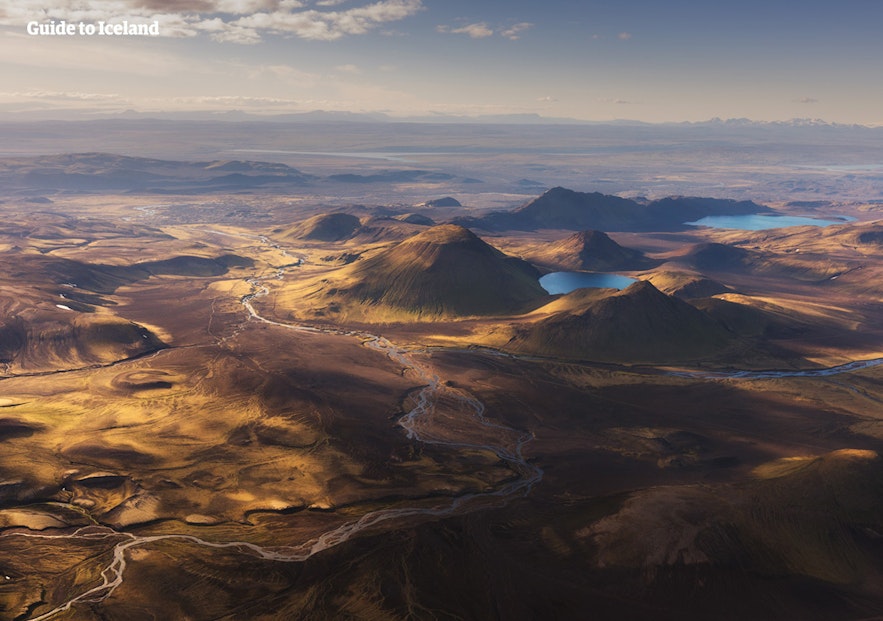
Iceland is a relatively large country with a very small population (approximately 335,000), making it quite unlike anywhere else. Community spirit is tangible here, with locals relying on one another for entertainment and support, an important fact of life given that Reykjavík is, in truth, the only major urban centre in the country.
- See Also: The History of Reykjavik.
Studying, of course, should never be considered a vacation; if you accept a place at an Icelandic university, you will well and truly be living here, facing the same everyday issues that the locals do, i.e. rent, food allowance, bills, etc.
Where To Study in Iceland?
There are seven nationally accredited higher education institutions to be found in Iceland, each of which has its own advantages in terms of specialisms, reputation and location. Depending on what field you are looking to study, a clear choice should stand out from the pack—it is important to clarify first, however, which courses are provided in English by the institution in question.
- See Also: What To Do & Where To Go.
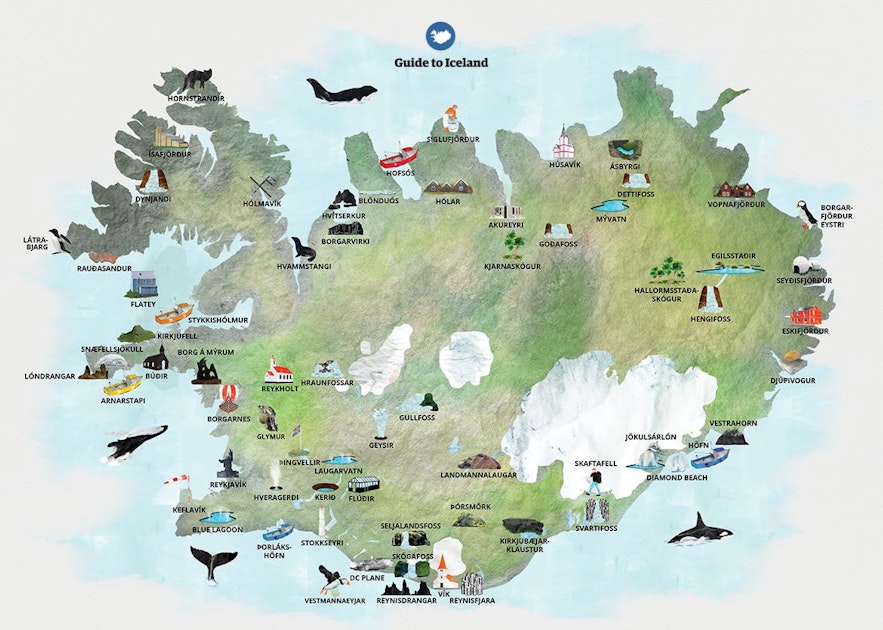
It is also worthy to consider exactly how you wish to spend your university days. Those planning to study here from abroad may have visited Iceland previously, but many have not, meaning that all they know of the country is from what they have read, watch and heard from others.
Many will likely overestimate the “ wealth of attractions ” in Akureyri , for example, realising quickly that three years of life is quite different to a two week’s vacation.
- See Also: Time in Iceland | A Land of Here and Now.
That’s not to suggest for one moment that Iceland is, in any way, a barren rock devoid of life—on the contrary, but it does provide a quality of living that is highly contrasted to the fast-paced, competitive atmospheres of those education institutes found in, say, New York, Zurich, Tokyo, or Sydney.
To put it another way; if you’re studying and trying to find a quiet place to study… you’re not looking hard enough.
If you are attending one of the institutes in the capital, such as the University Of Iceland or Reykjavík University , you will be blessed with all of the amenities of the city, whilst those studying in the more isolated regions, such as the Agricultural University of Iceland , in Borgarnes , will be privy to gorgeous surrounding nature throughout their tenure.
Both offer their own unique advantages and disadvantages, offering both environments and special experiences that cannot be matched by the other. If you have an area of study in mind, it is always recommended to contact your university of choice directly to ensure the course is provided in English.
Universities in Reykjavik
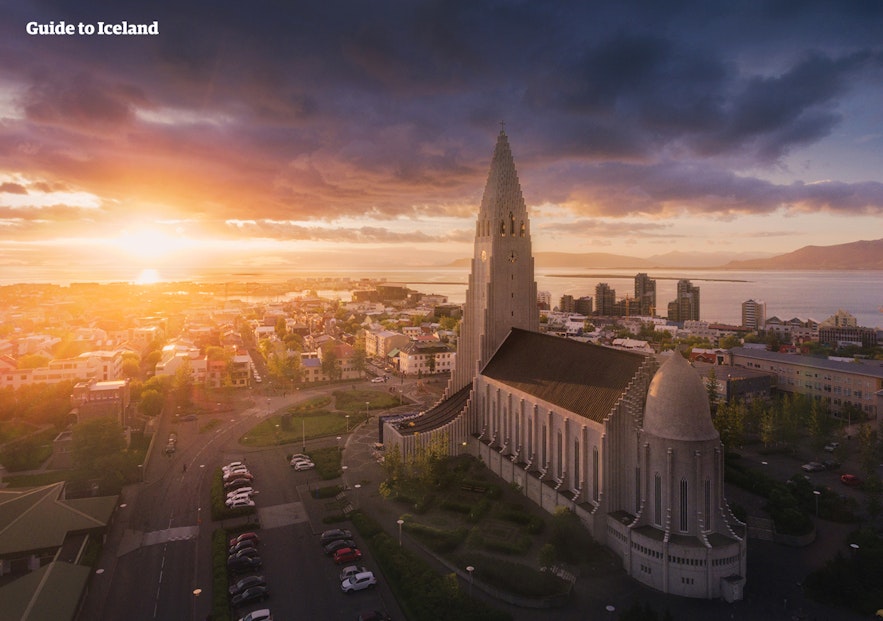
Reykjavík is Iceland’s capital city, a cultural hub filled with museums and art galleries , cosy coffee shops , colourful tin houses and fascinating landmarks, such as the Lutheran Church, Hallgrimskirkja , the Perlan Observation Deck and Harpa Concert Hall and Conference Centre.
- See Also: Secret Spots & Hidden Gems in Reykjavík.
Nestled in the country’s southwest and home to two-thirds of an already diminutive population—approx; 123,000, with 216,940 in total found in Greater Reykjavík, referring to the city and six surrounding municipalities—this is very much the heart of the Icelandic nation.
It should come as no surprise then that Reykjavík sees the main bulk of pedestrian traffic, be it visiting tourists, busy locals, exchange students or foreign workers, this city is alive like no other place in Iceland.
Boasting two of the country’s premier educational facilities, The University of Iceland and Reykjavík University, Reykjavík is a city which continues to attract students from across the world, offering a Nordic, European charm, a quiet place to study, reflect and grow, and quality learning programmes to top it all off.
- See Also: The Ultimate Guide to Downtown Reykjavik.
That’s not to mention the incentives offered to foreign exchange or international students by each prospective university, more of which can be found on their websites.
The University of Iceland
The University of Iceland, (“ Háskóli Íslands ”) is the country’s leading education facility, providing a wide range of undergraduate and postgraduate courses to approximately 13,000 students. The institution provides 400 programmes, boasts a permanent staff of 1500 employees and lecturers, and is one of the key participants in field study, with ten different research stations found across the country.
- See Also: The Fascinating History of Icelandic Architecture.
The university was first founded on 17th June 1911, located in the Parliament House at Austurvöllur. The date of its founding held particular importance; it was exactly one hundred years since the birth of Icelandic statesman, Jón Sigurðsson , whose ties to the country’s independence movement have long been held in high esteem by the country’s intellectuals.
The university resided for 29 years, having merged with the School of Medicine and the School of the Law (both of which were to become faculties), and a newly established School of Philosophy (in which no one enrolled for the first year).
1911 saw 45 enrolled students, of which only one was female—this stands in stark contrast to today, where approximately 65% of enrolled students are female, as are 45% of faculty members. The University relocated to where it stands today, at Suðurgata, in 1940, where it continued its rapid expansion.
- See Also: Gender Equality in Iceland.
The university maintains strong links with other educational facilities abroad, continues to contribute actively to research papers and conferences across the globe and ranks highly on international statistics.
For example, in 2018, graduate students on the MA Natural Resources and Environment were encouraged to attend both the Arctic Circle Conference in Reykjavík, as well as a talk held at MIT in Boston, US, to name just two examples of the opportunities on offer.
Today, the university is split into five schools, School of Education, School of Engineering and Natural Sciences, School of Health Sciences, School of Humanities and School of Social Sciences, which is further split into twenty-five different faculties, ranging from ‘ Electrical and Computer Engineering ’ to ‘ Nursing ’ to ‘ Icelandic and Comparative Cultural Studies ’.
Reykjavik University
Reykjavik University (RU) is the largest private university in Iceland with around 3500 students in two schools, School of Science and School of Social Sciences, that together encompass seven academic departments.
- See Also: The Icelandic Flag | A Tale of Identity.
The University offers preliminary studies, diploma certifications, undergraduate and graduate courses and PhD studies. The departments are Engineering, Computer Science, Psychology, Sports Science, Law, and Business Administration.
Reykjavik University is located in Nautholsvik next to the Öskjuhlid hill near the centre of the city. All of the University´s operations are under one roof, housed in a building that opened in 2010. Students are roughly 3800 students, and permanent staff is 250.
- See Also: Sightseeing in Reykjavík .
The university uses a multi-disciplinary, hands-on approach to learning, preparing students for the challenges they face after graduation. Major courses are also strongly linked to local corporations and institutes, meaning students will actively engage with real-world projects, gaining valuable experience and industry contacts in the process.
Reykjavík University is an international education provider; all undergraduate courses on offer are undertaken in Icelandic, whilst most Master’s and PhD programmes are taught in English. Those who do not speak English as their first language will likely be asked to provide their TOEFL scores or the equivalent body
Iceland Academy of the Arts
Iceland Academy of the Arts (“ Listaháskóli Íslands ”) was founded as a higher education on the 21st of September 1998, after the merger of the Iceland Drama School and the Reykjavík Arts School. The Academy incorporates five different departments: Fine Arts, Design and Architecture, Theatre and Dance , Art Education and Music .
- See Also: The Story of Icelandic Cinema.
One of the major benefits of attending the Iceland Academy of the Arts is the incredible number of cooperative partners who the institute works with, providing fantastic opportunities for the next generation of budding artists.
The Academy works with such organisations as the University of Iceland, the National Theatre , the Iceland Symphony Orchestra, the Icelandic Opera , the Reykjavík City Theatre , the Reykjavík Art Museum, the National Gallery of Iceland and the Living Art Museum , to name only a handful.
- See Also: Music In Iceland.
The Iceland Academy of the Arts is a private, self-governing institution and has seen notable artists pass through its hallways. For example, the LazyTown actor, Stefán Karl Stefánsson , the visual artist Alex Somers and singer-songwriter, Ólöf Arnalds .
RANNIS - The Icelandic Centre For Research
Rannís, The Icelandic Centre For Research , is not a university, but it does provide educational courses in a wide range of fields, such as immigration, public and private rights, the obligations of Icelandic society, multiculturalism and human rights.
These courses are provided for both adults and children, alongside translation services, Icelandic courses and the providing of support for implementing technology and science policy in Iceland. In this sense, The Icelandic Centre For Research is not a higher education institute in the traditional sense, but still presents plenty of windows for further learning.
Aside from the educational opportunities on offer at the Icelandic Research Centre, staff members focus on intercultural exchange and counselling for immigrants, through a partnership with the Icelandic Red Cross.
- See Also: How Hard Is It To Speak The Icelandic Language?
The Research Centre is an enormous aid for those struggling with the visa, residency and citizenship processes in Iceland, providing education, awareness and tangible opportunities to those seeking housing, employment, legal or medical support.
Universities Outside of Reykjavik.
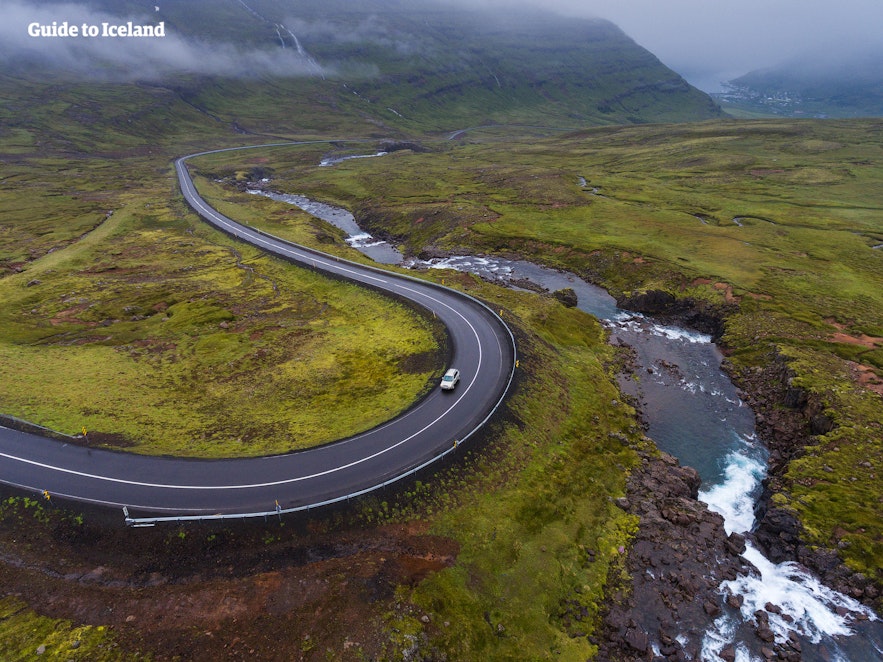
Some hoping to study abroad in Iceland will be looking for a different experience to that of undertaking education in the capital.
After all, despite the wildly disproportionate spread of the country’s population, this island is truly massive, with numerous other towns and settlements that, despite being of a far slower-pace than the capital, still offer their own unique attractions and colourful local communities.
Bifröst University
Bifröst University (" Háskólinn á Bifröst ") was initially founded in Iceland’s capital in 1918 out of the co-operative movement, having been largely modelled on Ruskin College in Oxford . Thus, it was named Samvinnuskólinn , or the Cooperative College , and from the outset aimed to educate the leaders of the future, going on to specialise in business, law and the social sciences.
In 1955, the institution moved 110 kilometres north to the valley of Norðurárdalur , in the Borgarfjörður area , where a small academic village began to thrive. In 1998, the establishment was given university accreditation, and became a private, self-governing body, taking approximately 40% of its income from the Icelandic state, 40% from tuition and 20% from other sources.

Today, the village of Bifröst has an approximate population of 200 people, though this increases to around 600-700 during the winter months.
The university’s surrounding nature is one of the greatest attractions for prospective students; nearby mountainscapes and dried lava fields make this area an aesthetic paradise, changing colour and form with the passing seasons.
Nearby, students can discover exciting hiking and cycling trails, a 9-hole golf course, Mt Baula and the waterfall, Glanni . The site also provides accommodation on site, offering one room apartments suited for individual students or couples.

The University of Akureyri
The University of Akureyri (" Háskólinn á Akureyri ") has been the go-to education provider for Iceland’s north since September 1987 with the formation of both a Health Sciences and Industrial Management faculty. This has been an enormous economic boost for the region ever since, and even today, the university acts as a major centre for the north’s future development.
- See Also: Top 10 Things to Do in Akureyri.
Akureyri is widely regarded as Iceland’s unofficial “Capital of the North”; as the country’s second-largest urban settlement, residents of Akureyri boast a lifestyle of outdoor activity, sublime surrounding nature and vibrant local culture. The city is home to approximately 12,000 people and is beloved by Icelanders and visitors alike for its quintessential charm, scenic whale-watching, dramatic scenery and exhilarating skiing during winter months.
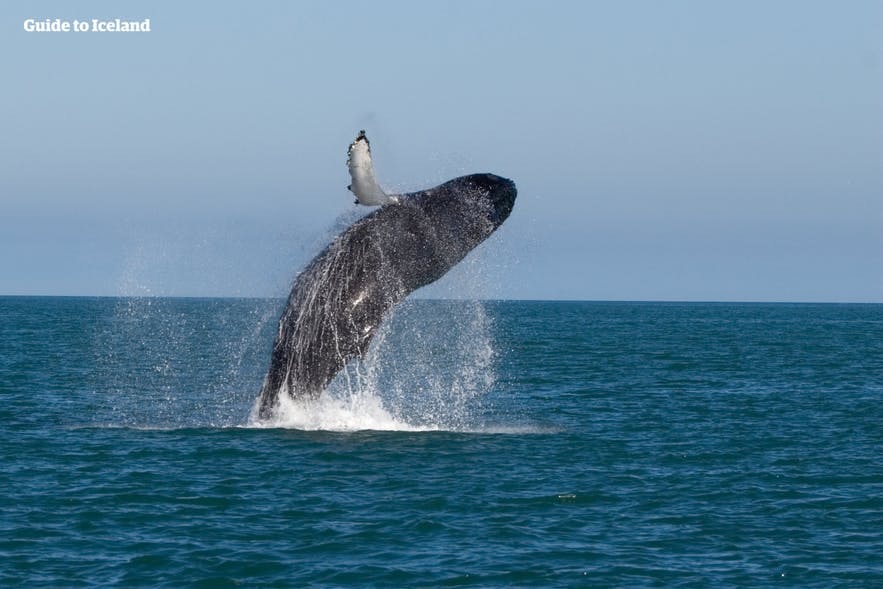
The university provides a wide variety of courses aimed at providing its students with practical and applicable knowledge upon graduation. Today, the establishment is operating three different schools: the School of Business and Science , the School of Humanities and Social Sciences and the School of Health Sciences.
- See Also: Iceland's Seasonal Contrasts.
In 2017, the University of Akureyri had approximately 1500 students, of which two-thirds were female students. This has almost always been the same ratio, though student numbers have progressively increased with each academic year. 2018 sees the University with an attendance of almost 2000 students, with a permanent staff of 200 people.
The vast majority of course instruction is in Icelandic, though English is offered for exchange students. The one course that is in English the year round is the master’s programme in Polar Law, a subset of the Arctic studies undertaken at the university. Aside from this, the university offers West Nordic studies and offers four courses a year aimed at introducing the Icelandic language to new speakers.
The Agricultural University of Iceland
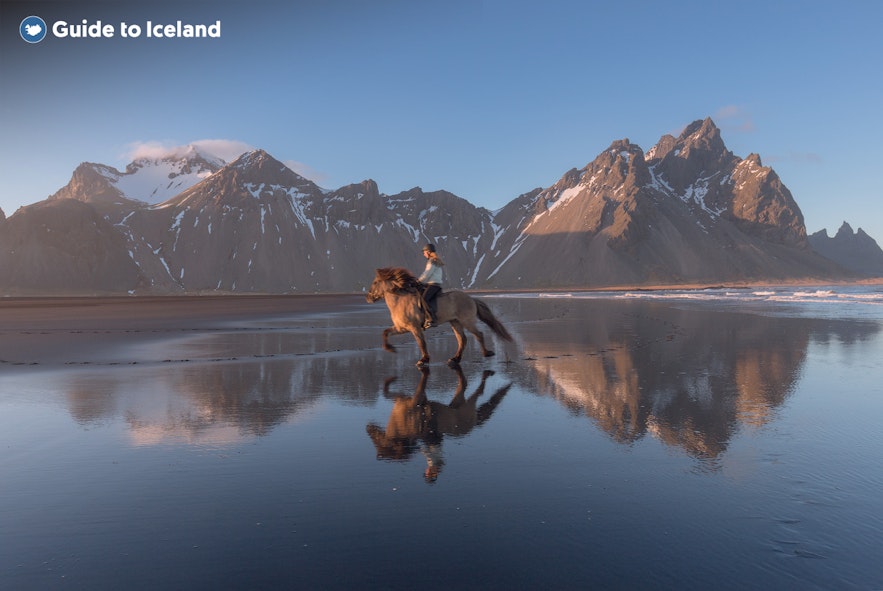
As its name suggests, the Agricultural University of Iceland (" Landbúnaðarháskóli Íslands ") is steeped in this country’s long history of farming, providing courses since 2005 through its three main faculties: ‘ Environmental Sciences ’, ‘ Land and Animal Resources ’ and ‘ Vocational and Continuing Education ’.
- See Also: Wildlife and Animals in Iceland.
Located in the gorgeous coastal town of Borgarnes, the institution also has research centres in Reykjavík, Árnessýsla and Eyjafjarðarsýsla . The Agricultural University of Iceland focuses on a plethora of various specialist fields; sustainable farming practices, forestry, the management of land and livestock, rural development and environmental restoration. It offers courses towards bachelor’s degrees and is entitled to provide MA and PhD courses.
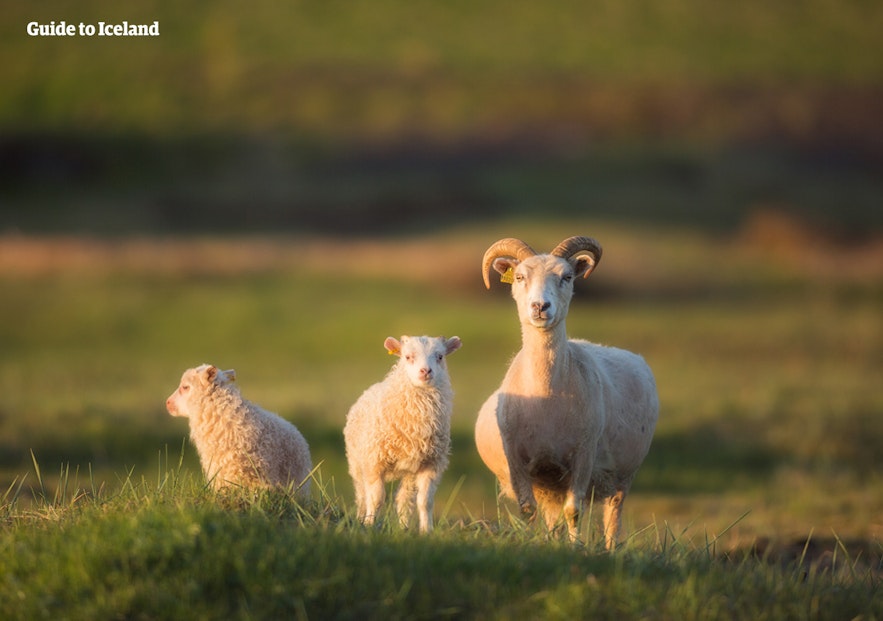
The Agricultural University of Iceland is at the forefront of sustainable planning in Iceland, advantageously placed in close proximity to its field of interest, making it fairly unique among educational institutions in Iceland. The Agricultural University of Iceland only provides post-graduate courses in English.
Hólar University College
Hólar University College (" Háskólinn á Hólum ") is, arguably, the most important historical education establishments in the country, having been established at Hólar in 1106, making it one of the oldest schools in the whole of Europe.
Following the Reformation , the institution was converted into a Latin School in 1550, which it stayed as until 1801. In 1882, an agricultural college was formed in the town, and it is this institution from which Hólar University College draws its roots. The college officially changed its name in 2007.
There are currently three different departments at Hólar University College, Aquaculture and Fish Biology , Equine Studies and Tourism Studies.
Hólar University College maintains partnerships with numerous other educational institutions across the world, providing opportunities for study in English.
Students Living in Iceland
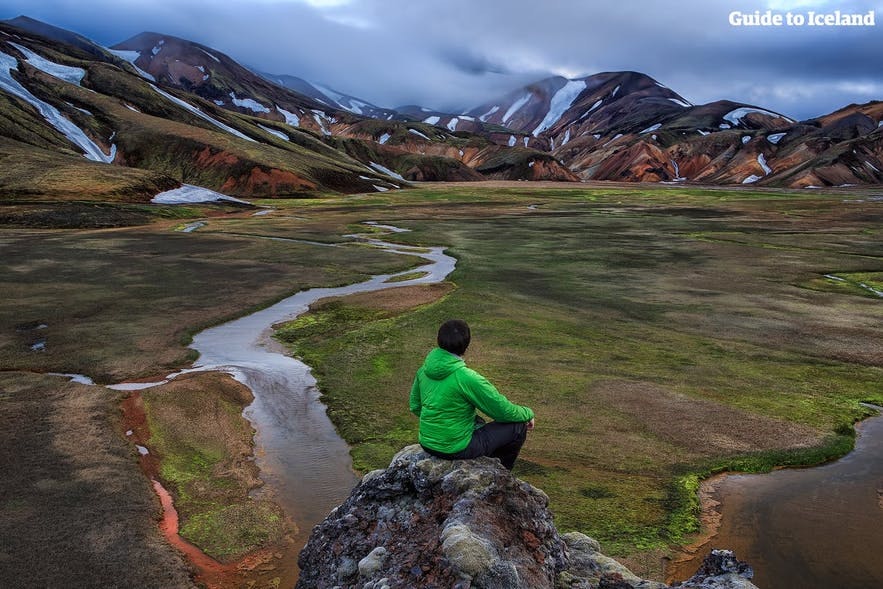
Those choosing to study in Iceland will, naturally, need a roof over their heads throughout their tenure. Thankfully, the vast majority of aforementioned education institutes provide either student housing (of varying levels of size and comfort) or, at the very least, a means of information and support for securing housing.
- See Also: Where to Stay in Iceland.
Student housing in Iceland is, almost universally, single rooms in apartments shared among 3-6 people, pretty standard for university housing around the world. Using Bifröst University as an example, student housing comes fully furnished, with laundry, an on-campus security guard, shared bathrooms and kitchens.
Heat, electricity and wifi are, in this case, included in the price, which hopefully provides an idea as to the type of accommodation to expect.
Those who choose to stay outside of student accommodation, or otherwise fail to secure a place, will live privately off-campus—this is, really, a factor worthy of consideration for those students taking courses within Reykjavík and, less commonly, in Akureyri.
Did you enjoy our article about Studying in Iceland? Are you studying in Iceland currently, and if so, why did you choose here? What are the advantages and disadvantages that you have found studying in Iceland? Make sure to leave your thoughts and queries in the Facebook comment box below.
Popular articles

Guide to Iceland | The Story of the Leading Travel Agency of Iceland

The Complete Guide to the Midnight Sun in Iceland

Top 20 Most Beautiful Waterfalls in Iceland

22 Photos of the Aurora in Iceland

Mountains in Iceland
Other interesting articles.
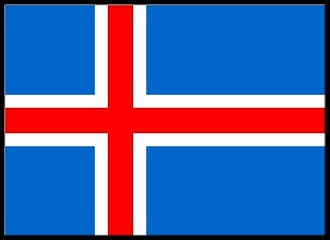
The Icelandic Flag | A Tale of Identity
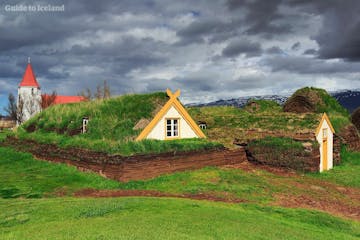
The Nature of Icelanders

Disgusting Food in Iceland

Download Iceland’s biggest travel marketplace to your phone to manage your entire trip in one place
Scan this QR code with your phone camera and press the link that appears to add Iceland’s biggest travel marketplace into your pocket. Enter your phone number or email address to receive an SMS or email with the download link.
Top things to do in Iceland
Book your complete trip with the best companies only

Visit a Live Volcano

Visit the Blue Lagoon

Go on a Road Trip

Do the Golden Circle

See the Glacier Lagoon

South Coast Tours

Find the Northern Lights

Explore an Ice Cave
The Ísland.is App
The Icelandic school system, studying, student finances and housing, etc.
The Icelandic School System
In Iceland the school system includes preschool, primary school, secondary school and university. Educational policy is overseen by Ministry of Education and Children including the general curriculum for preschools, primary schools, secondary schools and all levels of music schools.
School policies are decided at the municipal level in concert with the ministry. They provide general guidelines on what the community will emphasize in school. Each school prepares their own school curriculum and schedule, which is made available on the website of each school.
Compulsory Education until Age of 16
Preschool is intended for children up to the age of 6. After preschool, compulsory education begins in Iceland as children are required to attend primary school until the age of 16. Age is based on the child's birth year and not the birthday and each school year runs from from August to May, meaning a single school year spans two calendar years.
Preschools and primary schools are operated at the municipal level. Some municipalities have also contracted private preschools to offer residents services.
Choosing Studies that Suits You
All people should have equal access to educational opportunities regardless of gender, residence, disability, financial situation, religion and cultural or social background.
Some schools have prerequisites for admission and limited enrollment. Universities, secondary schools and continuing education schools offer different programs in various fields and professions. In this way, students can take individual classes before committing to a long-term program.
Most universities and some secondary schools offer distance learning options, which is also true of continuing education schools and regional education and training service centers throughout the country.
Student Housing
Upper-level students (secondary school and university) have different options when it comes to housing depending on where they are studying or where their legal domicile is registered.
Secondary schools outside the capital area often offer non-local students accommodation in dormitory facilities, and some municipalities offer student apartments for rent.
Students at the University of Iceland can apply for housing in campus dormitories, and most other universities in Iceland offer dormitories or apartments for students.
Financing Your Studies
The Icelandic Student Loan Fund offers loans to students to cover costs of living while pursuing their studies in Iceland and abroad. The fund also provides loans to students at the secondary level who are studying a licensed industrial trade or in other approved vocational programs.
Student loans are subject to certain eligibility requirements. The loan amount is determined by the cost of living in Iceland as well as other relevant costs.
More information is available on the site for the Icelandic Student Loan Fund .
Studying Abroad
Even if you know what you want to study, it can be quite difficult to find the right school and program. All of the Nordic countries maintain public websites with searchable information on various programs. On the site farabara.is (in Icelandic), users can search for schools by country and find programs that appeal to them. Likewise, both the University of Iceland and Reykjavík University operate international offices where students can get information on exchange programs and international job training around the world.
Many Icelandic residents are eligible for temporary exchange programs in Europe , the US and elsewhere. The main requirement for such programs is generally that the educational institution in Iceland meets the requirements determined by the host country.
There are a number of organizations and associations in Iceland that aid in setting up exchange programs and other travel-based studies.
- Meet Jewells
- Work With Me
- Ask Jewells Anything
- My Iceland Map
- Free Packing Checklist
- Video Trip Consultation
- The Ultimate Guide to Renting a Car in Iceland
The Icelandic Education System: Interview with Arnór Guðmundsson – Ep. 54
Podcast: Play in new window | Download
Subscribe: Apple Podcasts | Spotify | RSS | More
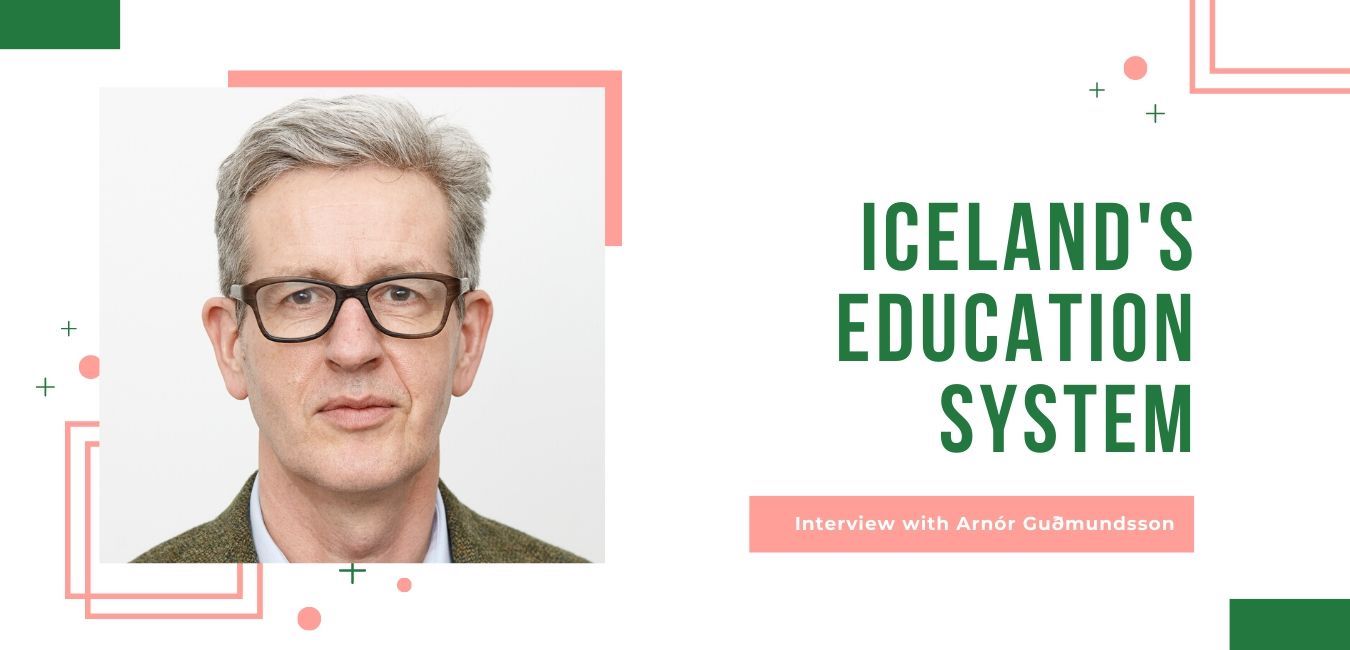
To get a better understanding of the Icelandic education system, I sat down with Arnór Guðmundsson for this episode of the All Things Iceland podcast . In his role as the Director of the Directorate of Education , his agency focuses on testing and producing textbooks for schools in Iceland. We discussed many things. Some of them include the different levels of education in Iceland, how the Icelandic education system compares with other countries, and some challenges the Directorate is facing.
The continued decrease in literacy among Icelandic teenage boys and how the survival of the Icelandic language is threatened by English are topics most people are not aware of who live outside of the country. Arnór was helpful in giving an overview of the system. I have also included answers to frequently asked questions regarding the Icelandic education system, which are not in the podcast interview.
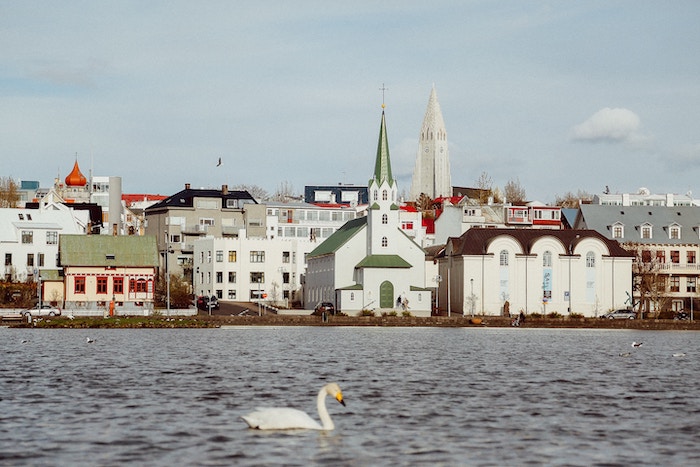
Arnór’s interview questions
What is the history of the education system in Iceland?
What are the levels in the icelandic education system, do you need to know icelandic to study in iceland, how many universities does iceland have, are there private schools in iceland, is education free in iceland for international students, questions i asked arnór during the interview:.
- What made you interested in working in the Directorate of Education in Iceland?
- How is the education system in Iceland setup? What are the different levels?
- I assume that technology is used quite a bit in schools here. I am just wondering how it is used in the different education levels. Is it used early on or does the introduction of technology start at a later education level?
- Is it important to promote and foster creativity in schools in Iceland?
- What is the difference in the standard of education between public schools vs private schools in Iceland?
- How does the education system in Iceland compare with other Nordic countries?
- When a child that doesn’t speak or understand Icelandic enters the education system, is there a process for helping them to learn the language?
- What are some challenges regarding the education system that the Directorate of Education is trying to tackle?
- I read a recent article about the reading comprehension being much poorer in Iceland than in other countries. Basically, the amount of students that did not achieve basic reading comprehension standards increased quite a bit. What do you think are some of the reasons why reading comprehensions skills among some students has deteriorated?
- Is there any concern about how much English is being used among teenagers in Iceland?
- You studied at the University of Minnesota back in the 90’s. Do you feel that your education in Iceland back then had prepared you for studying in the U.S.?
- Please share your impression of the education system in the United States on a university level
- What is your favorite Icelandic word or phrase?
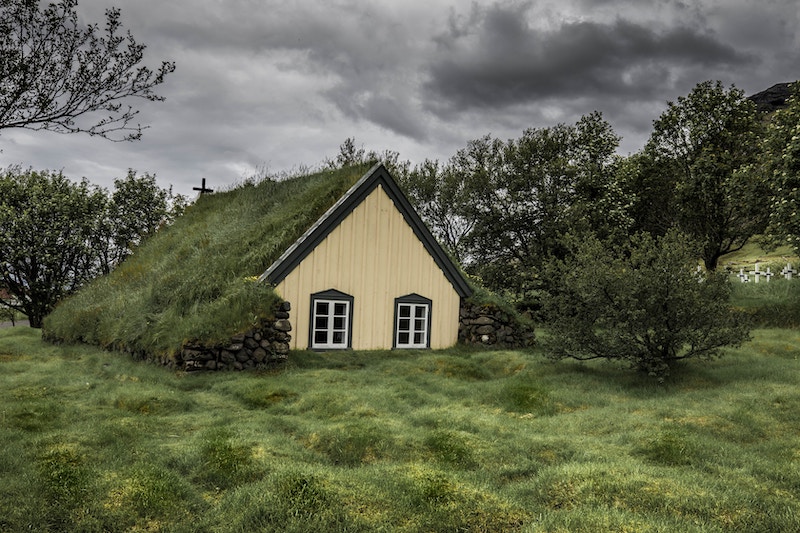
One of the oldest educational institutions in Iceland, Menntaskólin í Reykjavík , can be traced back to 1056! For centuries, education in Iceland has been of great importance. However, the first national education law wasn’t passed until 1907. Later, the Compulsory Education Act of 1974 modernized the Icelandic education system. It included a mandate for providing special education services to all students with disabilities.
Three former schools, Prestaskólinn, Læknaskólinn and Lagaskólinn , were combined to create the University of Iceland in 1911. The schools individually taught theology, medicine and law. Naturally, the professors in the early days of the university only taught those classes for those specific fields. Over time, the fields and expertise of the faculty have diversified. This university is the country’s oldest and largest institution for higher education.
Governing Agency for Icelandic Education
The Ministry of Education, Science and Culture was established in 1942 and has the jurisdiction of educational responsibility in the country. It issues the national curriculum guidelines for the educational institutions. Most schools in Iceland are public but there are a small number of private schools that have popped up. Interestingly, the Icelandic education system has been decentralized over the years. The local authorities are responsible for the primary and lower schools. While the Ministry is responsible for the upper secondary schools and higher education.
About five years ago, the National Center for Educational Materials and The Education Testing Institute combined to become the Directorate of Education. As mentioned in the podcast interview above, Arnór leads that agency.
There are four levels of education in Iceland. They are playschool, primary school, upper secondary school, and higher education.
These levels are split into compulsory and non-compulsory. Play school, upper secondary school and higher education are non-compulsory. Primary school is the only compulsory, or mandatory schooling in the country.
Pre-primary school or Play school (Leikskólí)
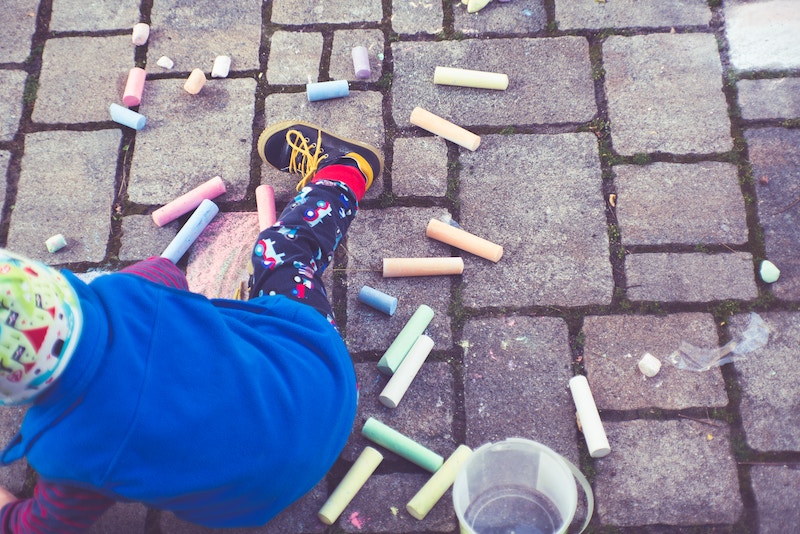
Parents with children between the ages of two and six can opt to send them to play school. While it is not mandatory for the child to attend this level of schooling, it is helpful for them because specific curriculum has been set up at this level. It is meant to help the child transition to the compulsory education level. Play school is not free but the cost is subsidized by the local municipalities.
About 30% of the fees paid by parents covers the cost of running the playschools. If a parent opts to send their child to a private playschool, they will pay about 10-20% more than the public institutions. The time spent at a play school can vary. The range is normally a minimum of four hours and a maximum of nine hours per day.
Compulsory (Primary) Education
Compulsory education consists of primary and upper secondary school. In Iceland, children between the ages of six and sixteen must attend school. The school year begins between August 21st and September 1st and ends between May 31st and June 10th. Children attend school five days a week and must have a minimum of 180 school days in the year. As in other countries, the parents of children in Iceland are responsible for their children attending school. As mentioned in the history of the Icelandic school system, the municipalities fund the schools and provide the necessary resources. These include teachers, administration, specialists and special education. 100% of students that are supposed to attend school are accepted and this level of education is completely free.
Due to the population in each area around the country, compulsory school sizes can vary widely. It is not uncommon for there to be less than ten students in a rural school in Iceland, but around 1200 students in a school in Reykjavík. Interestingly, around 50% of Icelandic schools have less than 100 students. Regardless, all of the institutions must follow the national curriculum guidelines. Along with the guidelines, schools are required to provide extracurricular activities, assessments for teachers and students, counseling, an annual calendar and a work plan for their school.
Upper Secondary Education (Framhaldsskólí)
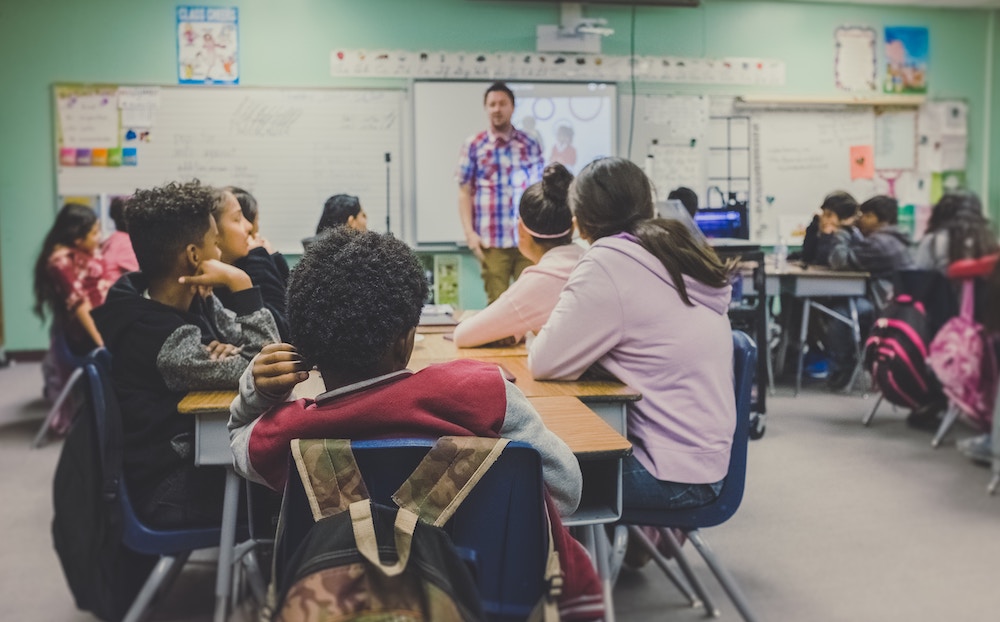
Any student that has completed their compulsory Icelandic education has the right to upper secondary education. Within the last few years the length of upper secondary education has changed from four years to three. Students are typically sixteen years of age when they start and nineteen when they graduate. However, this time frame can be different for a student enrolled in vocational courses. All the schools at this level are mixed sex and their are no tuition fees. However, there is an enrollment fee and all students are expected to pay for their own textbooks.
If a student doesn’t meet the entry requirements for different courses, they will be given a general study program. Because there are different upper secondary schools in Iceland that provide unique educational experiences, some schools are more popular than others. It is common that an upper secondary school has to turn away hundreds of applicants for the upcoming school year. There are about 40 upper secondary schools in Iceland. Similar to compulsory school, the size of the students in the schools vary based on the population in the area of the country that the school is in. The smallest school might have fifty students, while the largest school can have over 3,000.

The school year is split into fall and spring semesters. Iceland has about 40 upper secondary schools and they are divided into grammar schools, industrial-vocational schools, comprehensive schools, and specialized vocational schools. It is required by law that all of these types of schools are a combination of academic, vocational, artistic, and general programs of study. To be eligible for higher education, a student needs to pass a matriculation examination. It is called a Stúdentpróf in Icelandic and all upper secondary schools in the country can offer it.
One of the fascinating parts about this level of education is that the student is in control, to a degree, of how fast or slow they finish their education. A certain number of course units are available each term. Within those course units are a certain number of course credits. This is more similar to how the system is set up for college students in the United States. Evening classes and distance learning are also offered at many schools. Like compulsory school, counseling services are also offered at this educational level.
Higher Education (Háskólí)
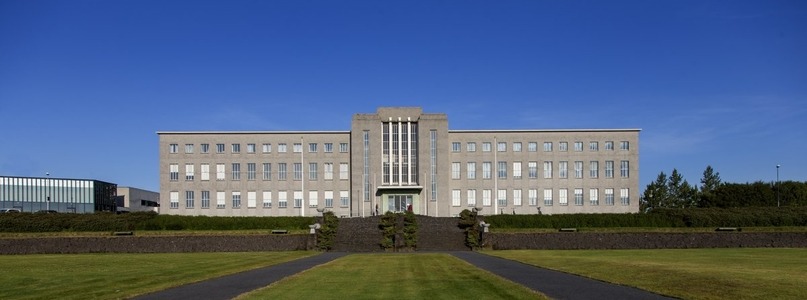
Most of the seven higher education institutions in Iceland are run by the state. Háskóli Íslands or the University of Iceland is the country’s first and oldest university. It was established in 1911, but since then other schools have opened up around the country. There is a mix of private and public universities in Iceland, and they both receive state funding.
Admittance Information
While many students in Iceland attend a higher university at home, there is also a decent amount that choose to study in a different country. The majority of students that want to attend a háskóli must pass an exam. However, work experience can be taken into account for acceptance, when it applies. For students in Iceland, registration for háskóli is from April to June each year. Foreign students must apply by the date specified by each university. Like upper secondary school, the school year for higher education institutions lasts from September to May. They are divided into fall and spring terms.
Financing for Attending a University in Iceland
Thankfully, there are no tuition fees for institutions in Iceland that are run by the state. However, you are required to pay a registration fee. If you opt to attend a private university, you will be charged tuition fees. Every student in Iceland is eligible for financial support from the Icelandic Student Loan Fund . The student’s personal and financial circumstances will determine the amount. People from the European Union or EEA-EFTA countries are also eligible for loans if they meet certain requirements.

Each year the Icelandic Ministry of Education, Science and Culture awards scholarships to students of foreign origin. These are given to people intending to study the Icelandic language, literature or the history at the University of Iceland.
Some of scholarships for higher education in Iceland are the following:
- Fulbright Scholarships
- Icelandic-American Society Scholarships (Thor Thors, Haystack, Luther College)
- American-Scandinavian Foundation Scholarships
- Leifur Eiríksson Foundation Scholarships
For more about grants in Iceland, I suggest checking out the information on the local grants program on U.S. Embassy’s website .
Yes and no. The answer to this question depends on if you are studying at the undergraduate or graduate level in Iceland. All undergraduate programs in Icelandic universities are primarily taught in Icelandic. Even though the textbooks and a class or two might be in English, you are expected to fully understand Icelandic if you plan to be an undergraduate student. Many foreigners come to Iceland for graduate level studies (Masters and Ph.D), because a good portion of them are taught in English.
Iceland has seven universities and they are:
- Agricultural University of Iceland
- Bifröst University
- Holar University College
- Iceland Academy of Arts
- Reykjavik University
- University of Akureyri
- University of Iceland
Yes, there are private schools in Iceland across all levels of study. There are a few international schools, as well.
Yes and no. Compulsory (or mandatory school) for children aged six to sixteen is free. Play school has an annual fee. State-run higher education institutes in Iceland do not have tuition fees but there is an annual registration fee.

Let’s be social! Here is where you can connect with me:
I hope you enjoyed listening to this interview. Make sure you are subscribed to the All Things Iceland podcast so you don’t miss new episodes. If the platform you are listening to this podcast on allows you to leave a review, please do so, if you haven’t already.
Þakka þér kærlega fyrir að hlusta (og að lesa) og sjáumst fljótlega
Thank you kindly for listening (and reading) and see you soon!

Jewells Chambers
About the author, leave a reply cancel reply.
Your email address will not be published. Required fields are marked *
Save my name, email, and website in this browser for the next time I comment.
- All Things Iceland Episodes
- Ask Jewells Anything About Iceland
- Destinations
- Folklore Friday
- Icelandic News
- Months in Iceland
- Musing on Iceland
- Places to Visit
- The pursuit of fluency
- Travel Tips
Recent Blog Posts
The four protectors of iceland – folklore friday.
- Is Iceland Splitting in Half? – How Moving Tectonic Plates Impacts the Country
- Bickering Icelandic Siblings Seal Their Fates With Magic – Folklore Friday
- Rökkvi Vésteinsson on Using LingQ to Learn Languages & More
- Iceland’s Loch Ness Monster – Folklore Friday
All Things Iceland is the go-to resource to learn about Icelandic history, culture, language and nature from the view of an expat.
Recent Podcast
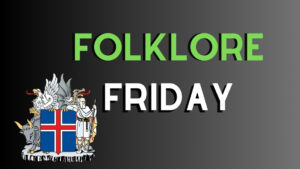
clock This article was published more than 4 years ago
What Finland is really doing to improve its acclaimed schools

Finland has been paid outsized attention in the education world since its students scored the highest among dozens of countries around the globe on an international test some 20 years ago.
And while it is no longer No. 1 — as the education sector was hurt in the 2008 recession, and budget cuts led to larger class sizes and fewer staff in schools — it is still regarded as one of the more successful systems in the world.
In an effort to improve, the Finnish government began taking some steps in recent years, and some of that reform has made for worldwide headlines. But as it turns out, some of that coverage just isn’t true.
A few years ago, for example, a change in curriculum sparked stories that Finland was giving up teaching traditional subjects. Nope .
You can find stories on the Internet saying Finnish kids don’t get any homework. Nope.
Even amid its difficulties, American author William Doyle, who lived there and sent his then-7-year-old son to a Finnish school, wrote in 2016 that they do a lot of things right:
What is Finland’s secret? A whole-child-centered, research-and-evidence based school system, run by highly professionalized teachers. These are global education best practices, not cultural quirks applicable only to Finland.
‘I have seen the school of tomorrow. It is here today, in Finland.’
Here is a piece looking at changes underway in Finnish schools by two people who know what is really going on. They are Pasi Sahlberg and Peter Johnson. Johnson is director of education of the Finnish city of Kokkola. Sahlberg is professor of education policy at the University of New South Wales in Sydney. He is one of the world’s leading experts on school reform and is the author of the best-selling “ Finnish Lessons: What Can the World Learn About Educational Change in Finland ?”
No, Finland isn’t ditching traditional school subjects. Here’s what’s really happening.
By Pasi Sahlberg and Peter Johnson
Finland has been in the spotlight of the education world since it appeared, against all odds, on the top of the rankings of an international test known as PISA , the Program for International Student Assessment, in the early 2000s. Tens of thousands visitors have traveled to the country to see how to improve their own schools. Hundreds of articles have been written to explain why Finnish education is so marvelous — or sometimes that it isn’t. Millions of tweets have been shared and read, often leading to debates about the real nature of Finland’s schools and about teaching and learning there.
We have learned a lot about why some education systems — such as Alberta, Ontario, Japan and Finland — perform better year after year than others in terms of quality and equity of student outcomes. We also understand now better why some other education systems — for example, England, Australia, the United States and Sweden — have not been able to improve their school systems regardless of politicians’ promises, large-scale reforms and truckloads of money spent on haphazard efforts to change schools during the past two decades.
Among these important lessons are:
- Education systems and schools shouldn’t be managed like business corporations where tough competition, measurement-based accountability and performance-determined pay are common principles. Instead, successful education systems rely on collaboration, trust, and collegial responsibility in and between schools.
- The teaching profession shouldn’t be perceived as a technical, temporary craft that anyone with a little guidance can do. Successful education systems rely on continuous professionalization of teaching and school leadership that requires advanced academic education, solid scientific and practical knowledge, and continuous on-the-job training.
- The quality of education shouldn’t be judged by the level of literacy and numeracy test scores alone. Successful education systems are designed to emphasize whole-child development, equity of education outcomes, well being, and arts, music, drama and physical education as important elements of curriculum.
Besides these useful lessons about how and why education systems work as they do, there are misunderstandings, incorrect interpretations, myths and even deliberate lies about how to best improve education systems. Because Finland has been such a popular target of searching for the key to the betterment of education, there are also many stories about Finnish schools that are not true.
Part of the reason reporting and research often fail to paint bigger and more accurate picture of the actual situation is that most of the documents and resources that describe and define the Finnish education system are only available in Finnish and Swedish. Most foreign education observers and commentators are therefore unable to follow the conversations and debates taking place in the country.
For example, only very few of those who actively comment on education in Finland have ever read Finnish education law , the national core curriculum or any of thousands of curricula designed by municipalities and schools that explain and describe what schools ought to do and why.
The other reason many efforts to report about Finnish education remain incomplete — and sometimes incorrect — is that education is seen as an isolated island disconnected from other sectors and public policies. It is wrong to believe that what children learn or don’t learn in school could be explained by looking at only schools and what they do alone.
Most efforts to explain why Finland’s schools are better than others or why they do worse today than before fail to see these interdependencies in Finnish society that are essential in understanding education as an ecosystem.
Here are some of those common myths about Finnish schools.
First, in recent years there have been claims that the Finnish secret to educational greatness is that children don’t have homework.
Another commonly held belief is that Finnish authorities have decided to scrap subjects from school curriculum and replace them by interdisciplinary projects or themes.
And a more recent notion is that all schools in Finland are required to follow a national curriculum and implement the same teaching method called “phenomenon-based learning” (that is elsewhere known as “project-based learning”).
All of these are false.
In 2014, Finnish state authorities revised the national core curriculum (NCC) for basic education. The core curriculum provides a common direction and basis for renewing school education and instruction. Only a very few international commentators of Finnish school reform have read this central document. Unfortunately, not many parents in Finland are familiar with it, either. Still, many people seem to have strong opinions about the direction Finnish schools are moving — the wrong way, they say, without really understanding the roles and responsibilities of schools and teachers in their communities.
Before making any judgments about what is great or wrong in Finland, it is important to understand the fundamentals of Finnish school system. Here are some basics.
First, education providers, most districts in 311 municipalities, draw up local curricula and annual work plans on the basis of the NCC. Schools though actually take the lead in curriculum planning under the supervision of municipal authorities.
Second, the NCC is a fairly loose regulatory document in terms of what schools should teach, how they arrange their work and the desired outcomes. Schools have, therefore, a lot of flexibility and autonomy in curriculum design, and there may be significant variation in school curricula from one place to another.
Finally, because of this decentralized nature of authority in Finnish education system, schools in Finland can have different profiles and practical arrangements making the curriculum model unique in the world. It is incorrect to make any general conclusions based on what one or two schools do.
Current school reform in Finland aims at those same overall goals that the Organization for Economic Cooperation and Development — which gives the PISA exams every three years to 15-year-olds in multiple countries — as well as governments and many students say are essential for them: to develop safe and collaborative school culture and to promote holistic approaches in teaching and learning. The NCC states that the specific aim at the school level is that children would:
- understand the relationship and interdependencies between different learning contents;
- be able to combine the knowledge and skills learned in different disciplines to form meaningful wholes; and
- be able to apply knowledge and use it in collaborative learning settings.
All schools in Finland are required to revise their curricula according to this new framework. Some schools have taken only small steps from where they were before, while some others went on with much bolder plans. One of those is the Pontus School in Lappeenranta, a city in the eastern part of Finland.
The Pontus School is a new primary school and kindergarten for some 550 children from ages 1 to 12. It was built three years ago to support the pedagogy and spirit of the 2014 NCC. The Pontus School was in international news recently when the Finnish Broadcasting Company reported that parents have filed complaints over the “failure” of the new school.
But according to Lappeenranta education authorities, there have been only two complaints by parents, both being handled by Regional Authorities. That’s all. It is not enough to call that a failure.
What we can learn from Finland, again, is that it is important to make sure parents, children and media better understand the nature of school reforms underway.
“Some parents are not familiar with what schools are doing,” said Anu Liljestrom, superintendent of the education department in Lappeenranta. “We still have a lot of work to do to explain what, how and why teaching methods are different nowadays,” she said to a local newspaper. The Pontus School is a new school, and it decided to use the opportunity provided by new design to change pedagogy and learning.
Ultimately, it is wrong to think that reading, writing and arithmetic will disappear in Finnish classrooms.
For most of the school year, teaching in Finnish schools will continue to be based on subject-based curricula, including at the Pontus School.
What is new is that now all schools are required to design at least one week-long project for all students that is interdisciplinary and based on students’ interests. Some schools do that better more often than others, and some succeed sooner than others.
Yes, there are challenges in implementing the new ideas. We have seen many schools succeed at creating new opportunities for students to learn knowledge and skills they need in their lives.
It is too early to tell whether Finland’s current direction in education meets all expectations. What we know is that schools in Finland should take even bolder steps to meet the needs of the future as described in national goals and international strategies. Collaboration among schools, trust in teachers and visionary leadership are those building blocks that will make all that possible.

- Sustainability
- Responsible Business
- Small Medium Business
- Pitch A Story

Image Credit- Wikipedia , Pixabay (Representational)
No Tests, No Homework! Here's How Finland Has Emerged As A Global Example Of Quality, Inclusive Education
Others/world, 15 may 2022 3:40 am gmt, editor : shiva chaudhary | .

Shiva Chaudhary
Digital Editor
A post-graduate in Journalism and Mass Communication with relevant skills, specialising in content editing & writing. I believe in the precise dissemination of information based on facts to the public.
Creatives : Shiva Chaudhary
Student-oriented approach to education in finland has been recognised as the most well-developed educational system in the world and ranks third in education worldwide..
"A quality education grants us the ability to fight the war on ignorance and poverty," - Charles Rangel
The uniqueness of the Finnish education model is encapsulated in its values of neither giving homework to students every day nor conducting regular tests and exams. Instead, it is listening to what the kids want and treating them as independent thinkers of society.
In Finland, the aim is to let students be happy and respect themselves and others.
Goodbye Standardised Exams
There is absolutely no program of nationwide standard testing, such as in India or the U.S, where those exams are the decisive points of one's admission to higher education like Board Examinations or Common Entrance Tests.
In an event organised by Shiksha Sanskriti Utthan Nyas, RSS Chief Mohan Bhagwat remarked, "It is because they teach their children to face life struggles and not score in an examination," reported The Print .
Students in Finland are graded based on individual performance and evaluation criteria decided by their teachers themselves. Overall progress is tracked by their government's Ministry of Education, where they sample groups of students across schools in Finland.
Value-Based Education
They are primarily focused on making school a safe and equal space as children learn from the environment.
All Finland schools have offered since the 1980s free school meals, access to healthcare, a focus on mental health through psychological counselling for everyone and guidance sessions for each student to understand their wants and needs.
Education in Finland is not about marks or ranks but about creating an atmosphere of social equality, harmony and happiness for the students to ease learning experiences.
Most of the students spend half an hour at home after school to work on their studies. They mostly get everything done in the duration of the school timings as they only have a few classes every day. They are given several 15 -20 minutes breaks to eat, do recreational activities, relax, and do other work. There is no regiment in school or a rigid timetable, thus, causing less stress as given in the World Economic Forum .
Everyone Is Equal - Cooperate, Not Compete
The schools do not put pressure on ranking students, schools, or competitions, and they believe that a real winner doesn't compete; they help others come up to their level to make everyone on par.
Even though individualism is promoted during evaluation based on every student's needs, collectivity and fostering cooperation among students and teachers are deemed crucial.
While most schools worldwide believe in Charles Darwin's survival of the fittest, Finland follows the opposite but still comes out at the top.
Student-Oriented Model
The school teachers believe in a simple thumb rule; students are children who need to be happy when they attend school to learn and give their best. Focus is put upon teaching students to be critical thinkers of what they know, engage in society, and decide for themselves what they want.
In various schools, playgrounds are created by children's input as the architect talks to the children about what they want or what they feel like playing before setting up the playground.
Compared To The Indian Education Model
Firstly, Finnish children enrol in schools at the age of six rather than in India, where the school age is usually three or four years old. Their childhood is free from constricting education or forced work, and they are given free rein over how they socialise and participate in society.
Secondly, all schools in Finland are free of tuition fees as there are no private schools. Thus, education is not treated as a business. Even tuition outside schools is not allowed or needed, leaving no scope for commodifying education, unlike in India, where multiple coaching centres and private schools require exorbitant fees.
Thirdly, the school hours in Finland do not start early morning at 6 am, or 7 am as done in India. Finland schools begin from 9.30 am as research in World Economic Forum has indicated that schools starting at an early age is detrimental to their health and maturation. The school ends by mostly 2 pm.
Lastly, there is no homework or surprise test given to students in Finland. Teachers believe that the time wasted on assignments can be used to perform hobbies, art, sports, or cooking. This can teach life lessons and have a therapeutic stress-relieving effect on children. Indian schools tend to give a lot of homework to prove their commitment to studying and constantly revise what they learn in school.
Delhi Govt's Focus On Education
The Delhi model of education transformed under the Aam Aadmi Party's (AAP) tenure in the capital. In line with the Finnish model, Delhi government schools have adopted 'Happiness Classes' to ensure students' mental wellness through courses on mindfulness, problem-solving, social and emotional relationships, etc., from 1st to 8th classes.
Delhi government also introduced 'Entrepreneurial Mindset Classes' in 2019 to instil business and critical thinking skills among students of 9th to 12th classes. The practical approach in this class is indicated in the 'Business Blasters', a competition started by the Delhi government to encourage students to come up with start-up ideas and students were provided with ₹1000. Approximately 51,000 students participated in the first edition of the competition, according to Citizen Matters .
Through these endeavours, India is steadily investing in creating human resources that can get employment and generate employment for themselves.
India is at its demographic dividend stage; more than half of its population is within the working-age group of 14 to 60 years. Education is an essential factor in utilising this considerable advantage to grow economically and socially. Finland's education model is how India can strive closer to its goal and progress as a nation.
Also Read: Connaissance! Delhi Board of School Education Pens MoU To Add French In Government Schools

We are an independent and public-spirited digital media platform for Indian millennials. We report news and issues that matter as well as give you the opportunity to take action.


IMAGES
VIDEO
COMMENTS
The system of education in Iceland is divided in four levels: playschool, compulsory, upper secondary and higher, and is similar to that of other Nordic countries. Education is mandatory for children aged 6-16. Most institutions are funded by the state; there are very few private schools in the country. Iceland is a country with gymnasia .
The types of schools in Iceland are as follows: Primary School. Primary school education in Iceland is compulsory for children between six and 16 years old. The primary school curriculum focuses on developing students' language, mathematics, science, and social studies skills. Primary schools in Iceland are either public or private.
The results showed that in Shanghai, China the students had the highest number of hours of homework with 13.8 hours per week. Russia followed, where students had an average of 9.7 hours of homework per week. Finland had the least amount of homework hours with 2.8 hours per week, followed closely by South Korea with 2.9 hours.
In Iceland, the total compulsory instruction time over the course of primary and lower secondary education is lower than the OECD average, at 7 616 hours, distributed over 10 grades.; In Iceland, 53% of 15-19 year-olds are enrolled in general upper secondary education and 11% in vocational upper secondary education.A further 20% are enrolled in lower secondary programmes and 4% in tertiary ...
The system of education in Iceland states that it is the right of the children to attend school. It also should be in the same area where they live at. At the same time it is their parent's responsibility to register them and make sure they attend school every day. Every educational institution is mixed, and children tend to be separated by age.
The University of Iceland, located in the capital Reykjavik, is the oldest in the country and was opened in 1911. In 2020, 4,269 people graduated from universities in Iceland. Of these, around 700 ...
Pre-school to Higher Education. In Iceland, the educational journey begins at an early age with pre-school (Leikskóli) usually admitting children at 18 months, though in some cases, enrollment can be as early as 1 year. These institutions focus on the holistic development of children, fostering creativity and curiosity from an early age.
In Iceland, all children aged 2-6 have the right to day-care. Day-care institutions are operated by the municipalities. In 2010, there were 277 pre-primary institutions in Iceland, with an average of 68 children per institution. Day-care is subsidised by the state, although parents pay day-care fees. Children eat breakfast and a proper lunch ...
Actual salaries also increase with the level of education. On average across OECD countries, actual salaries range from USD 41 941 at the pre-primary level to USD 53 682 at the upper secondary level. In Iceland, actual salaries average USD 47 620 at pre-primary level and USD 65 753 at upper secondary level.
This is less the case in Iceland: private sources accounted for 13% of total expenditure in pre-primary institutions, lower than the OECD average of 17%. At tertiary level, 8% of expenditure comes from private sources in Iceland, compared to 30% on average across OECD countries. Socio-economic status may significantly impact students ...
Student housing in Iceland is, almost universally, single rooms in apartments shared among 3-6 people, pretty standard for university housing around the world. Using Bifröst University as an example, student housing comes fully furnished, with laundry, an on-campus security guard, shared bathrooms and kitchens.
The Icelandic Student Loan Fund offers loans to students to cover costs of living while pursuing their studies in Iceland and abroad. The fund also provides loans to students at the secondary level who are studying a licensed industrial trade or in other approved vocational programs. Student loans are subject to certain eligibility requirements ...
The mean temperature at Reykjavík in January is 31 °F (-0.6 °C) and 52 °F (11.2 °C) in June. The northern coasts have colder water offshore for most of the year. The temperature there is normally 5.5 °F (3 °C) colder than the southern coast temperature in summer and 9 °F (5 °C) colder in winter.
In Iceland, the percentage of teachers who have received feedback via more than three different methods is relatively low. (17.6 %, rank 49/50 , 2018) Download Indicator. Iceland has one of the highest proportion of teachers who agree that they have control over determining course content. (96.5 %, rank 2/50 , 2018) Download Indicator
To get a better understanding of the Icelandic education system, I sat down with Arnór Guðmundsson for this episode of the All Things Iceland podcast. In his role as the Director of the Directorate of Education, his agency focuses on testing and producing textbooks for schools in Iceland. We discussed many things.
EP2030 offers Iceland the opportunity to think how best to reshape institutions or ways of working to best allow implementation of large-scale, long-term policy change to take place. Iceland can reflect and specify the institutional approach to implementation; enhance system capacity for change; and bring policy coherence around EP2030.
The modern Icelandic system of higher education dates back to the foundation of the University of Iceland in 1911. The legal framework covering higher education in Iceland is the Higher Education Act No 63/2006. The acts apply to institutions providing higher education leading to a degree and which have been accredited by the Ministry of Higher ...
Still, many people seem to have strong opinions about the direction Finnish schools are moving — the wrong way, they say, without really understanding the roles and responsibilities of schools ...
They are given several 15 -20 minutes breaks to eat, do recreational activities, relax, and do other work. There is no regiment in school or a rigid timetable, thus, ... Lastly, there is no homework or surprise test given to students in Finland. Teachers believe that the time wasted on assignments can be used to perform hobbies, art, sports, or ...
Answer to: Does Iceland have wolves? By signing up, you'll get thousands of step-by-step solutions to your homework questions. You can also ask...
Iceland and the Death Penalty: Iceland, like so many other European states, had the death penalty in the past for several offenses. Although recently the trend in greater Europe has been to remove the death penalty. However, Iceland has always been a bit of an outlier to the rest of Europe.
Answer to: Does Iceland have composite volcanoes? By signing up, you'll get thousands of step-by-step solutions to your homework questions. You can...